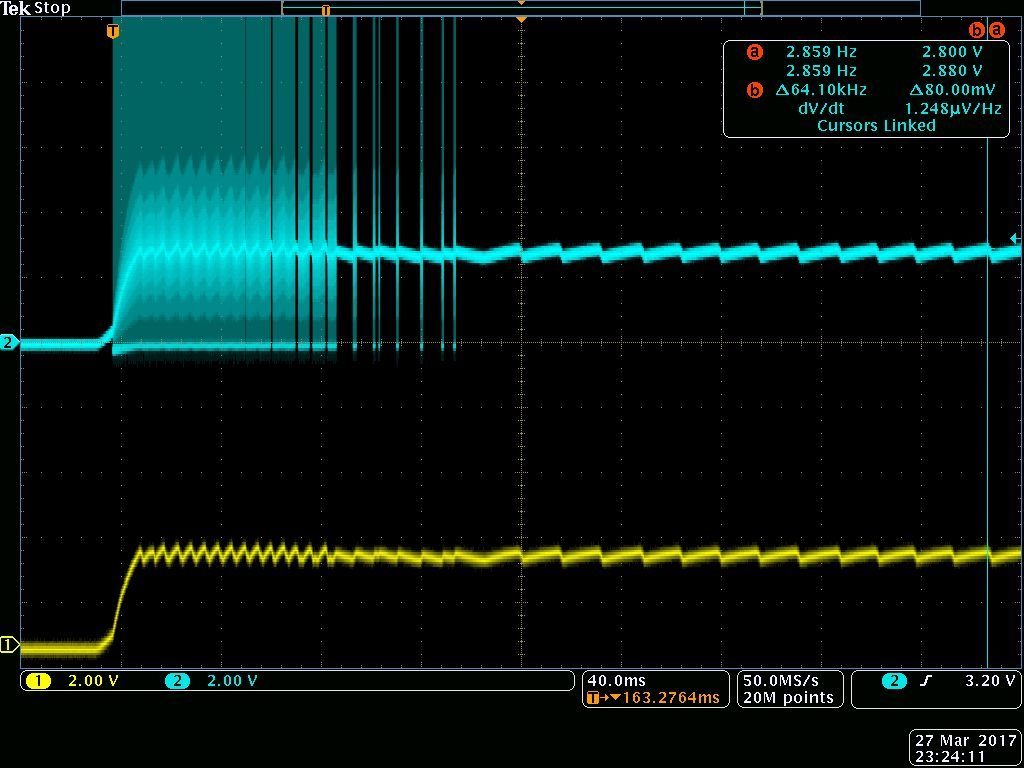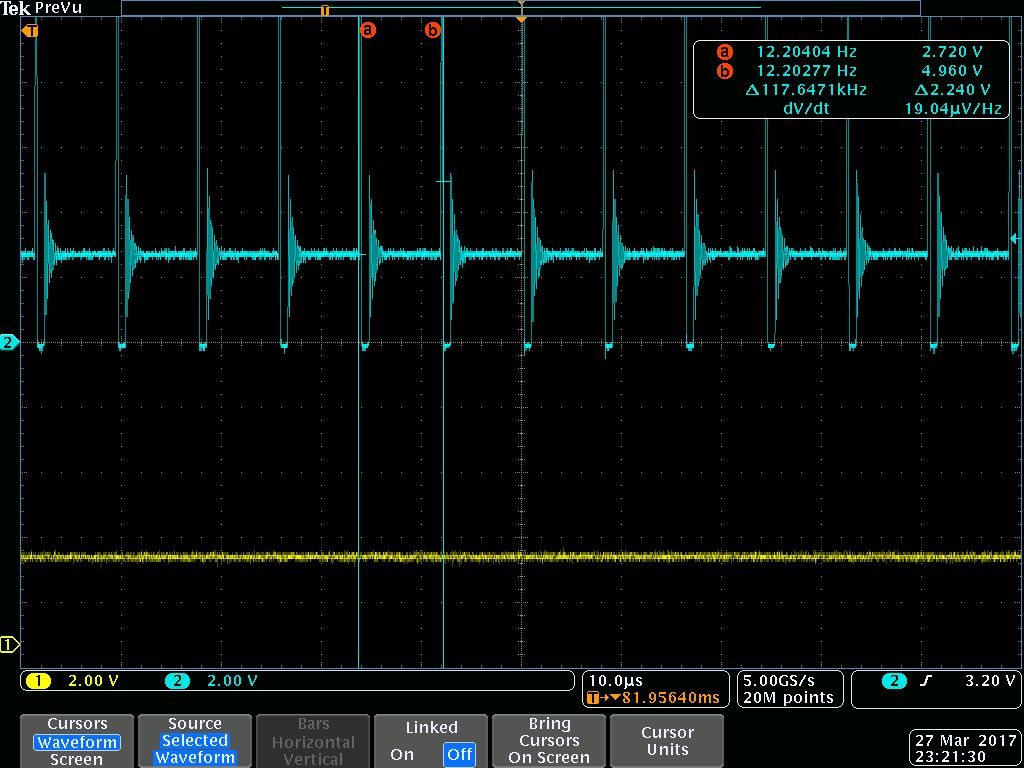Hi,
I've encountered a weird issue.
I have a board with TPS54332 to regulate 12V out of 20V input. the 12V feeds 4 more DCDC (0.9/1.2/1.8/3.3).
I've made two assembly batches.
The first batch (20 pcs, 2 months ago) was all machine assembled. And I've not encountered any problem with power management.
With the second batch (13 pcs, same PCB batch) few components were missing and therefore were soldered by hand. The relevant parts (for this thread) that were soldered by hand are the compensation circuit, the SS capacitor and the SCHOTTKY diode.
On half of the boards, hence, 7 boards I encountered a problem that the Vo is stuck on ~2.85V.
Above is the circuit.
Below are the screen shot from the Oscilloscope when powering up. probe #1 is the Vout (12V after the inductor) and Probe #2 is the PH pin.
As you can see above, after about 150ms the PWM stops , and even before, the Vout doesn't rise above the 2.85V.
Because I have two batches of production and one of the batches works well I assume I have a marginal situation which roll over to a fault when I solder by hand (capacitance and stuff)
1. what am I missing? why the same design which was taken from the WEBENCH doesn't response the same?
2. Regarding the Compensation filter. How does it effect the output? are the values must be followed exactly?
BR
Itay






